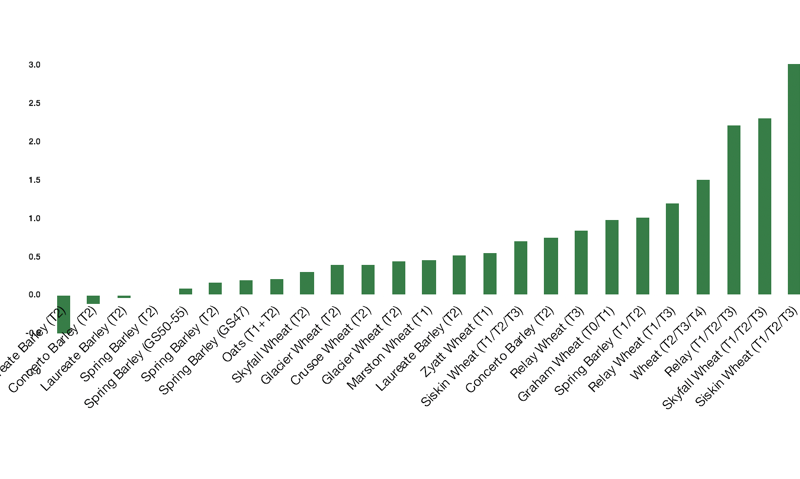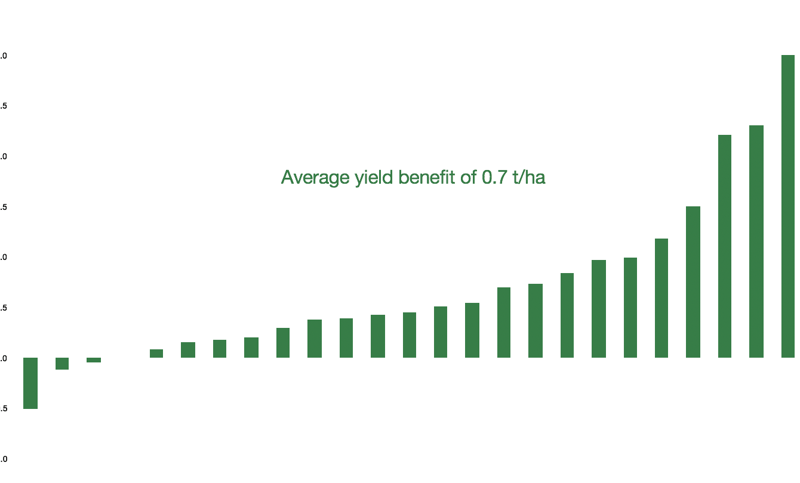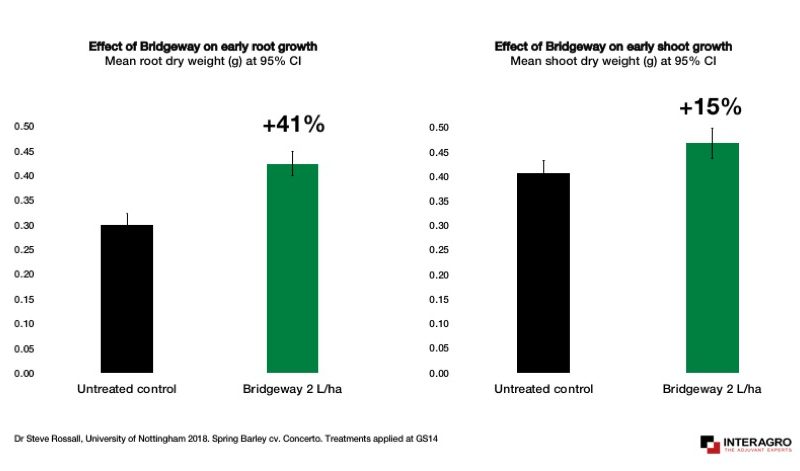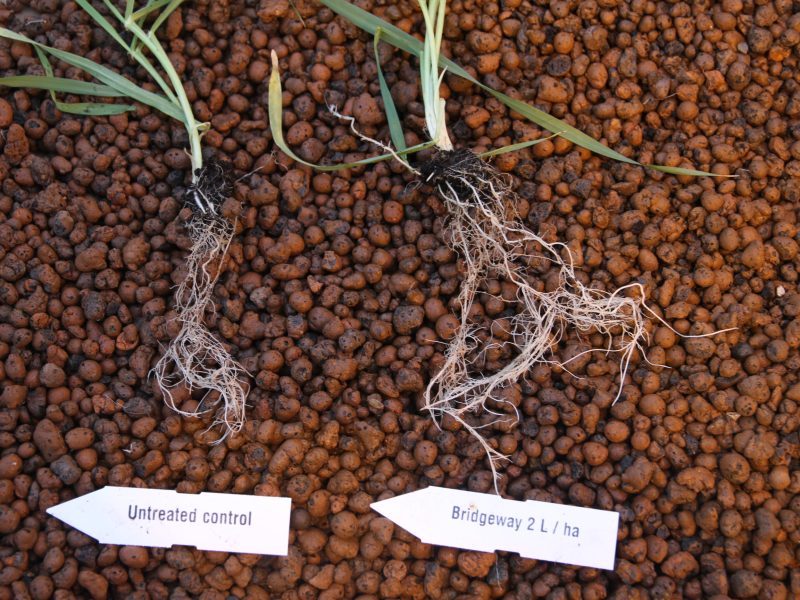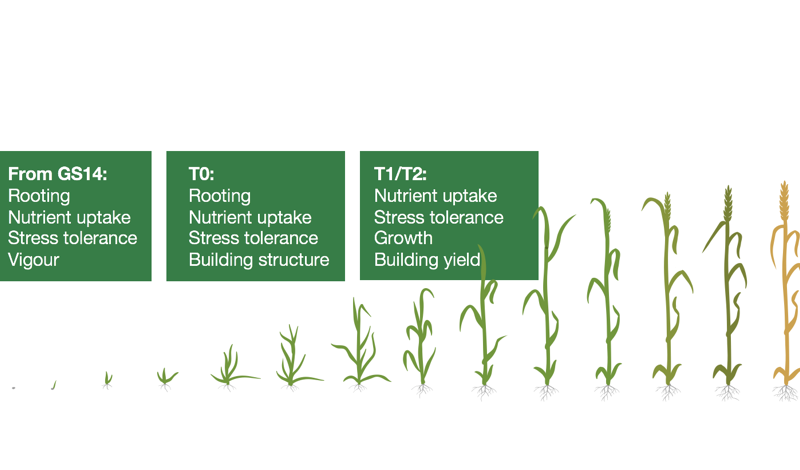If there’s one thing that can be guaranteed in the life of a crop, it’s that it will experience stress at some point, caused by environmental factors or from attack by pests and diseases. We take a look at how amino acid biostimulants Bridgeway and Zonda have performed in field and grower trials, and provide our advice for best results in 2019.
Building resilience into cropping systems is becoming increasingly important with the demands our climate extremes are placing on crops. Never was this more apparent than during the long, hot summer of 2018. In a year of unprecedented weather extremes and increased challenges to plant health, last summer was one of the hottest on record for the UK, up there with the heatwave of 1976. It’s clear that we need to change the way we think about growing. Crops will need to adapt to extreme weather patterns, exhibiting more resilience to a wider range of conditions than has been necessary in the past. This isn’t an issue we need to think about in the distant future; it’s affecting growers and their crops right now. We already know that environmental stress conditions can have a serious effect on plant fitness and productivity.
Applications of Bridgeway or Zonda will help crops cope better with stress when it does arrive. Trials and grower experience to date suggests that best results will be achieved by applying Bridgeway or Zonda ahead of crop stress. This will ensure that the crop has all the amino acids required for growth, hormone signaling, development and maintenance of metabolic pathways in order to maximise healthy growth and development to reach its yield and quality potential.
Bridgeway or Zonda applications:
- Increase metabolic efficiency
- Increase the crop’s access to water and nutrients
- Produce fitter plants with greater resilience to disease and environmental stress
- Produce healthier crops that build yield for longer
- Build yield and quality
2017 & 2018 trials have shown the highest yield responses come from early applications as part of a programme
2017 and 2018 trial conclusions:
- Across two years of trials, and 25 comparisons in a range of Cereal crops, Bridgeway/Zonda have delivered an average yield benefit of 0.7 t/ha, worth £126/ha (at a grain price of £180 per tonne)
- The highest yields have been achieved in situations where Bridgeway/Zonda were applied ahead of crop stress
- Best yield results come from starting with early applications that help to build plant health and resilience to stress
- By far the biggest yield responses have been achieved by applying Bridgeway/Zonda in a programme
Bridgeway increased rooting in Spring Barley by >40%
With Spring Barley crops in the ground and conditions turning dry in some parts of the country, now is a good time to consider applications of Bridgeway or Zonda to help protect crops from drought stress. The rooting ability of crops is not only vital for anchorage to prevent lodging, but also critical for the uptake of water and nutrients. Crops with better root structures are not only more likely to tiller well and increase the number of fertile spikelets, they are also better equipped to cope with abiotic stress and protect the crop’s genetic yield potential.
Research at The University of Nottingham has found that feeding Spring Barley crops Bridgeway at growth stage 14 increases root and shoot growth by +41% and +15% respectively.
Pathologist Dr. Steve Rossall from The University of Nottingham, designed tests to look at the effect of Bridgeway on early root and shoot growth in Spring Barley (Concerto). Treatments were applied at GS14 and assessed 24 days after application. All results were statistically significant at 95% confidence limits.
Bridgeway gave very positive and statistically significant effects on root and shoot growth at 95% confidence limits. Bridgeway is one of the better biostimulants and a benchmark product. Even though the Bridgeway was applied in an idealised way in these tests, the data suggest that growers are almost certain to get a benefit every year and will see a real benefit in stress years, particularly where crops are short of water in the establishment phase. There's still more research to do but I believe the best returns will come from using Bridgeway in a programmed approach.
Dr. Steve Rossall, University of NottinghamBridgeway and Zonda application summary:
- For best results, apply Bridgeway or Zonda early to protect yield potential
- Apply ahead of crop stress and maintain applications at the key stages of crop development
- Apply from GS14 in Spring Barley
- Apply 1.0-2.0 L/ha at T0 in Cereals and follow up with 2.0 L/ha at T1 and T2
- When applying with crop protection products, add Bridgeway or Zonda to the spray tank first
- Where adding an adjuvant to the tank as well, apply in the following order: 1. Adjuvant 2. Bridgeway or Zonda 3. Crop protection products.








